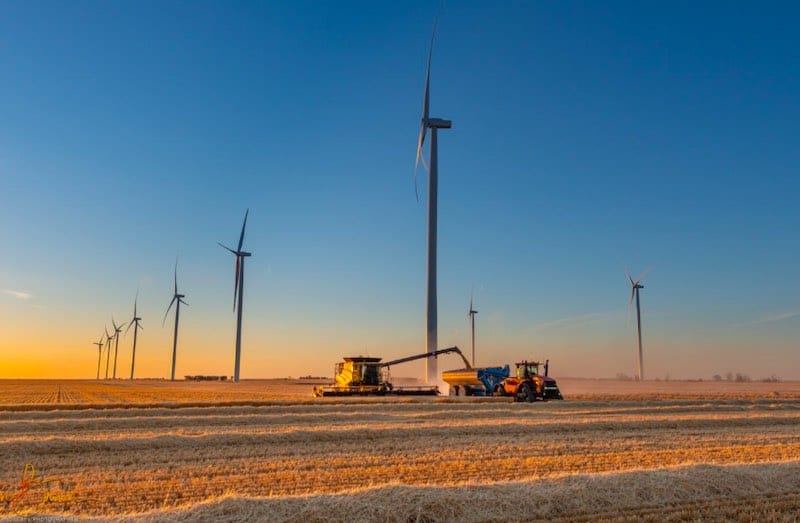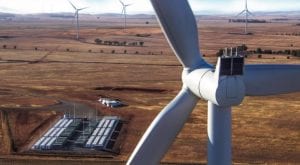The CSIRO has published the latest edition of its important GenCost report, and responded to critics by dialling in near term integration costs for wind, solar and storage. But the result is just the same – renewables are clearly Australia’s cheapest energy option, and the story for nuclear just got a whole ot worse.
The annual GenCost report, prepared in collaboration with the Australian Energy Market Operator since 2018, is an important guide to where Australia’s energy transition is at and where it should be heading, but over the past has become the target of attack from conservative naysayers and the pro-nuclear lobby.
CSIRO has defended its methodology, but to satisfy the critics has added in pre-2030 integration costs – including the new transmission lines being built to connect new generation – and finds that the story is much the same.
“While this change leads to higher cost estimates, variable renewables (wind and solar) were still found to have the lowest cost range of any new-build technology,” the CSIRO says, noting that this includes all integration costs up to and including 90 per cent renewables.
In the past year, cost of solar and offshore wind has fallen, the cost of battery storage has remained steady, but the cost of other technologies such as onshore wind and pumped hydro has increased.
The big mover – and one that is significant in the context of the Australian debate on the energy transition, and the federal Coalition’s insistence that nuclear is the answer to most questions – is the cost of nuclear and small modular reactors.
The CSIRO has been attacked by the pro-nuclear lobby, including conservative media and right wing think tanks, for what the lobby claims are inflated cost estimates, but the CSIRO says recent events have backed its numbers. In fact, they make clear that nuclear SMR costs are worse than thought.
CSIRO economist Paul Graham points to the collapse of a major deal this year involving the most advanced SMR projects in the US, the NucScale projects in Utah, which were withdrawn because of soaring costs.
Graham says it is significant because, as NuScale was listed and had to abide by strict regulatory disclosure rules, it had to be “honest” about the anticipated costs of SMRs.
And these were nearly double what was previously thought. In fact they ended up at the equivalent of $A31,000/MW, according to NuScale filings, and much higher than the $A19,000/MW estimated by the CSIRO in its previous report, and for which it was accused of inflating.
“The UAMPS (Utah utility) estimate implies nuclear SMR has been hit by a 70 per cent cost increase which is much larger than the average 20% observed in other technologies,” the CSIRO writes.
“The cancellation of this project is significant because it was the only SMR project in the US that had received design certification from the Nuclear Regulatory Commission which is an essential step before construction can commence.” Graham says that all other claims on nuclear SMR costs are just marketing and sales talk.
The reality, however, is that talk of nuclear SMRs as a solution for Australia’s energy transition and near term emissions targets are a distraction, given that the SMR technology is simply not available, and unlikely to be so for two decades.
The CSIRO report says some interesting things about the costs of wind and solar, technologies which are available and which do work. It says the costs of these technologies will continue to fall in coming years after the various price shocks that have affected the technologies over the last couple of years.
By including the costs of transmission and storage that is underway now and committed out to 2030 adds 40 to 60 per cent to the 2023 cost of deploying high shares of wind and solar, although that also ignores the technologies cost falls that will occur over time.
It notes that integration costs to make high shares of variable renewables reliable are estimated at $34/MWh to $41/MWh in 2023, and $25 to $34/MWh in 2030 depending on the VRE share.
“The LCOE cost range for variable renewables with integration costs is the lowest of all new-build technologies in 2023 and 2030,” the CSIRO says.
“The cost range overlaps slightly with the lower end of the cost range for coal and gas generation.
“However, the lower end of the range for coal and gas is only achievable if they can deliver a high capacity factor, source low cost fuel and be financed at a rate that does not include climate policy risk despite their high emissions.
“If we exclude high emission generation options, the next most competitive generation technology is gas with carbon capture and storage.”
Federal energy minister Chris Bowen says the report is proof that the government’s policies are on the right track, and the Coalition is pursuing a dangerous fantasy by urging the stop to cheap and reliable renewables, and a commitment to nuclear.
“The Opposition has engaged in some inappropriate and improper attacks on CSIRO and AEMO in recent months and have questioned GenCost,” Bowen told journalists on Thursday.
“GenCost is independently prepared and arm’s length from government, by the experts, by the scientists and economists, taking into account consultation right across Australia.
“And the GenCost report today takes into account all the costs that go with renewable energy between 2024 and 2030, including transmission and storage, and it still finds that renewable energy is by far the cheapest form of energy, and even if nuclear energy costs fall from 2030 onwards, nuclear energy will be at least three times more expensive than renewable energy and in all likelihood and more.”
The CSIRO has produced a video explaining its findings. You can find it here.













